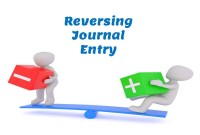- Home
- Business Processes
- Industry Knowledge
- Aerospace Industry
- Automotive Industry
- Banking Domain
- BFSI Industry
- Consumer/ FMCG Industry
- Chemicals Industry
- Engineering & Construction
- Energy Industry
- Education Domain
- Finance Domain
- Hospitality Domain
- Healthcare Industry
- Insurance Domain
- Retail Industry
- Travel and Tourism Domain
- Telecom Industry
- Leadership Skills
- eLearning
- Home
- Functional
- General Ledger (Record to Report)
- Defining Reporting Dimensions
Defining Reporting Dimensions
Multitude of these legal and operational structures clubbed with accounting and reporting needs give rise to many reporting dimensions at which the organization may want to track or report its operational metrics and financial results. This is where business dimensions play a vital role.
Multitude of these legal and operational structures clubbed with accounting and reporting needs give rise to many reporting dimensions at which the organization may want to track or report its operational metrics and financial results. This is where business dimensions play a vital role.
Business Dimensions:
A dimension reflects the attributes of a business, such as legal structure, management structure, departments and projects. Dimensions are used to help capture and analyze underlying data and when used with reporting provides an effective tool to break down key components of business to help make better business decisions. Business dimensions describe the business-specific objects within the model, such as products, customers, regions, employees, and so on.
Why we need business dimensions:
In any typical entity, accounting process starts with recording of a transaction that has a financial implication on a voucher and it culminates with the preparation of final books of accounts. However this simple process gains complexity when the size of the organization and diversity of its environment increases. For example: Global companies regularly distribute goods from a central site to customers located in different countries or regions. Before shipping lo a customer, goods may be processed through a separate operating unit or subsidiary in the country of sales origin. A complex sequence of coupled accounting records is needed because these transactions impact multiple organizations and legal entities, and most governments require a financial record for transactions conducted between legal entities. Management need to contemplate these business dimensions properly for decision-making and enhancing the achievement of the competitive advantage and control over the operations of the enterprise.
- There exist various types of entities or business units which are part of the same global group.
- These units may represent countries, locations, businesses, functions, projects, cost centers, segments etc.
- These units may have different reporting needs.
- These units may be responsible for their own profit and loss.
- They might be holding their own Fixed Assets.
- They might be concerned with their own markets where their products are sold.
- They might be constituted as separate legal entities over multiple layers of ownership with their peculiar independent local statutory reporting needs.
- Subsidiaries and branches operating as individual entities need to be consolidated with the group financials.
Examples of different dimensions are:
- Legal Entity: Financial results and trial balance at each legal entity level
- Division/Department: Financial results and trial balance at each division or department
- Product Line: Operating margins for each product line
- Geography: Annual Growth for each geography in which a company operates
- Project: Cost and profitability for each project undertaken by business
- Cost Center: Costs accumulated and allocated through each cost center
- Accounts: Total fixed assets owned by the legal entity, accounted under land and building, furniture and fixtures and other accounts
- Functional Area: Total cost attributable to each function like finance, marketing etc.
These dimensions further have parent child relationships within themselves and other corporate relationships (known as Business Hierarchies) with other dimensions. Corporate relationships are the links between various dimensions like parent companies, subsidiaries, headquarters, branches, functions, product lines, cost centers etc. A dimension may consists of one or more hierarchies that can contain several levels.
Related Links
You May Also Like
-
There are five types of core accounts to capture any accounting transaction. Apart from these fundamental accounts, some other special-purpose accounts are used to ensure the integrity of financial transactions. Some examples of such accounts are clearing accounts, suspense accounts, contra accounts, and intercompany accounts. Understand the importance and usage of these accounts.
-
An allocation is a process of shifting overhead costs to cost objects, using a rational basis of allotment. Understand what is the meaning of allocation in the accounting context and how defining mass allocations simplifies the process of allocating overheads to various accounting segments. Explore types of allocations and see some practical examples of mass allocations in real business situations.
-
Understand what we mean by GAAP to STAT adjustments. This article discusses the different standards that are used for multiple representations of the financial results for global organizations. Understand the meaning of US GAAP, Local GAAP, STAT, IFRS, and STAT. Finally, understand why accounting differences arise and how they are adjusted for different financial representations.
-
Team-Based Organizational Structure
Team-based structure is a relatively new structure that opposes the traditional hierarchical structure and it slowly gaining acceptance in the corporate world. In such a structure, employees come together as team in order to fulfill their tasks that serve a common goal.
-
Learn the typical accounting cycle that takes place in an automated accounting system. We will understand the perquisites for commencing the accounting cycle and the series of steps required to record transactions and convert them into financial reports. This accounting cycle is the standard repetitive process that is undertaken to record and report accounting.
-
As the business grows, the company may want to transition to a branch structure as branches are allowed to conduct a much broader range of activity than representative offices. Branches can buy and sell goods, sign contracts, build things, render services, and generally everything that a regular business can do. A company expands its business by opening up its branch offices in various parts of the country as well as in other countries.
-
Reversing Journals are special journals that are automatically reversed after a specified date. A reversing entry is a journal entry to “undo” an adjusting entry. When you create a reversing journal entry it nullifies the accounting impact of the original entry. Reversing entries make it easier to record subsequent transactions by eliminating the need for certain compound entries. See an example of reversing journal entry!
-
After reading this article the learner should be able to understand the meaning of intercompany and different types of intercompany transactions that can occur. Understand why intercompany transactions are addressed when preparing consolidated financial statements, differentiate between upstream and downstream intercompany transactions, and understand the concept of intercompany reconciliations.
-
GL - Unearned / Deferred Revenue
Unearned revenue is a liability to the entity until the revenue is earned. Learn the concept of unearned revenue, also known as deferred revenue. Gain an understanding of business scenarios in which organizations need to park their receipts as unearned. Look at some real-life examples and understand the accounting treatment for unearned revenue. Finally, look at how the concept is treated in the ERPs or automated systems.
-
In this article we will help you understand the double-entry accounting system and state the accounting equation and define each element of the equation. Then we will describe and illustrate how business transactions can be recorded in terms of the resulting change in the elements of the accounting equation.
Explore Our Free Training Articles or
Sign Up to Start With Our eLearning Courses

About Us
Learning
© 2023 TechnoFunc, All Rights Reserved











